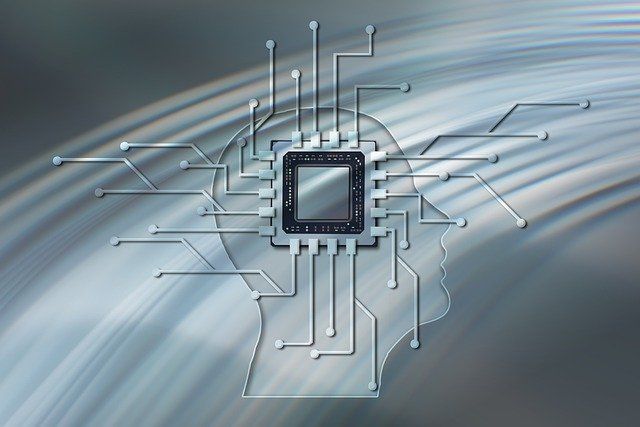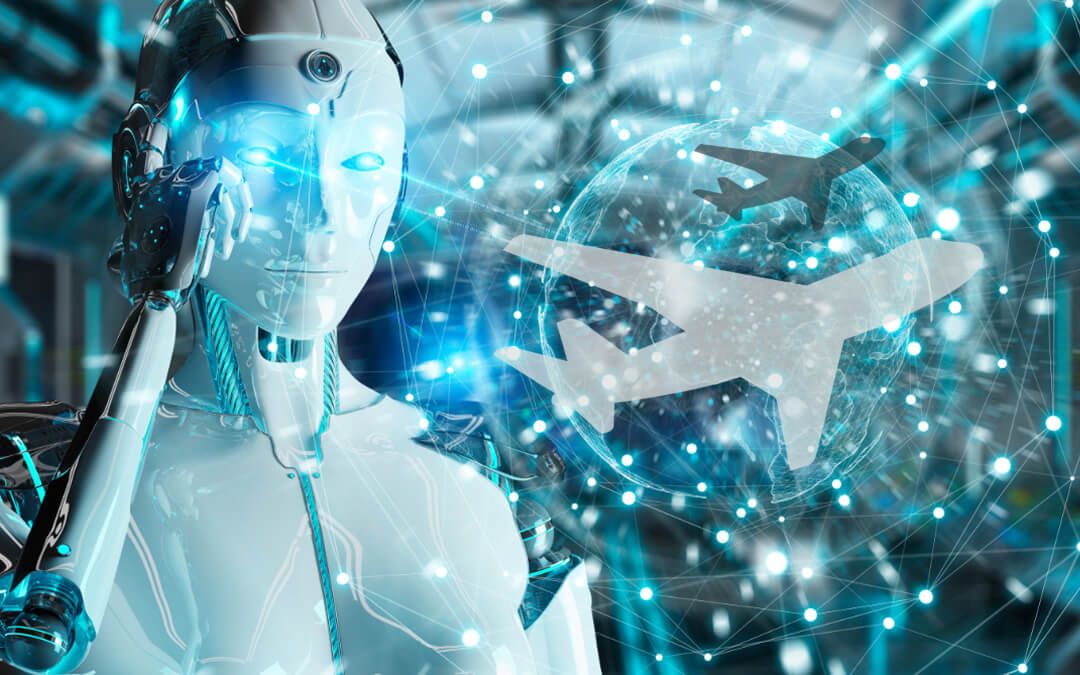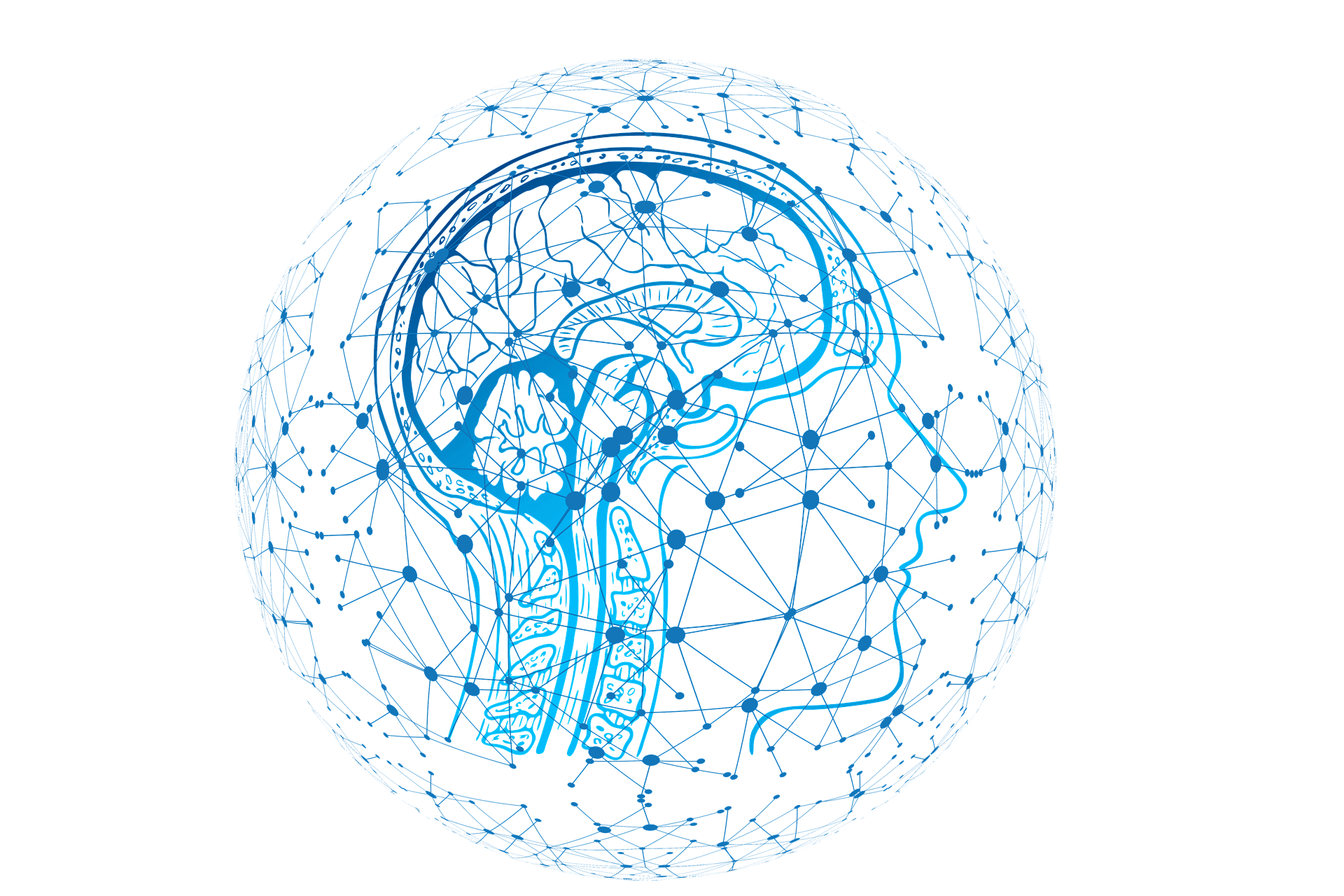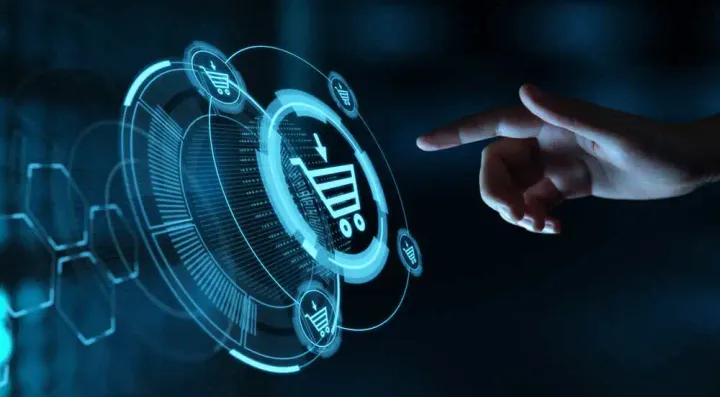Top Emerging Computer Vision Trends 2022
One of the most powerful and effective types of AI is computer vision. It aims to replicate the complicated human vision system in order for computers to detect and identify items in movies and photos in the same way that humans do.

What is computer vision in AI? Computer vision is one of the most effective and powerful types of AI. It focuses on replicating the complex human vision system for computers to detect and identify the objects in videos or images as humans do. It gives the ability to computers to see and understand real-world things and make decisions regarding what they've seen. Simply, it augments and automates human insights. Video intelligence or video analytics powered by computer vision helps identify the video objects with bounding boxes and revolutionize businesses. Plus, it empowers them to automate surveillance after mitigating risk, superfine security, and improving operational efficiency.
According to Grand View Research, the AI in computer vision market reached $11.34 billion globally in 2020 and is expected to grow from 2021 to 2028 at an annual growth rate of 7.3%. A huge wave of computer vision is coming; as reported by Forbes, the advanced computer vision market is expected to reach $49 billion by 2022. Most advancements in the computer vision field were observed after 2021 vision predictions.
Thanks to artificial intelligence and incredible deep learning, neural trends make it efficient enough to surpass human excellence in detecting and labeling objects. The driving force behind the improvement of computer vision is the data generated today that is used to train computer vision in a better way. Today's systems have achieved high accuracy, up to 99% from 50%, making them highly accurate than humans at responding quickly to visual inputs.
THE EVOLUTION OF COMPUTER VISION TRENDS
Before the advancement in deep learning, computer vision could perform very limited tasks. It required many developers' and operators' efforts to do manual coding. For example, for performing facial recognition, the developed used to go through the following steps:
- Database Creation: A database contains all relevant images of objects for tracking them in a specific format.
- Interpret Images: Various key data points are introduced for each image, like the distance between the eyes, lips, and upper nose with many other similar measurements. It helps in defining the unique characteristics of every individual object.
- Capture New Image Content: It's time to capture new images of videos, and the same measurement process was repeated to make key points on the image.
All the above work was done manually; after that, the system compared new images with those stored in its database. Hence, very little automation was shown as most of the work was done manually with large error margin chances. Machine learning offered a new approach to solving vision problems. Instead of coding manually, it allowed developers to program features to detect specific image patterns. Then they use statistical learning algorithms (linear or logistic regression) to support vector machines or decision trees to detect patterns for classifying images correctly.

Computer vision project ideas are considered as the most attractive AI field and greatly impacted by deep learning algorithms. These offer exceptional inner source solutions for object detection, image classification, face recognition, motion estimation, and object tracking in videos. Plus, it reduced the effort to detect corners in a specific image.
CURRENT CHALLENGES IN THE IMPLEMENTATION OF COMPUTER VISION
Though much work has been done on computer vision applications and their advancement since the 1960s, it is still in its early stage for research and development purposes. Its major reason is that the human visual system is complex, and the computer vision system works on a comparison basis. Humans take no time recognizing their friends and family as they have unlimited capacity to remember faces for future recognition. But, unlike humans, it requires a lot of training work for computers to handle a similar situation. Another challenging situation for computer vision engineers is integrating CV tools in real-world applications. Its solutions rely on software and hardware evolution, making it tough to integrate new computer vision technologies.
CV is a potentially thrilling technology as even supercomputers take weeks or even months to do their job, but compute vision is related to hardware and chips, which do processes at lightning speed. Let’s see how it will perform exceptional tasks as real-world applications.
COMPUTER VISION TRENDS IN 2022
1. Computer Vision in Automotive Industry
Tesla car autopilot comes with advanced safety features to help drivers perform heavy driving tasks easily. Tesla Autopilot weight assists drivers in steering the car, accelerating, and stopping the car automatically within the lane. Moreover, its lane detection deep learning helps navigating lane changes and searches for the right parking place at the end of the ride to park the car automatically.
Eight cameras are installed in the car system for sensing the vehicle's environment and work as a single environmental prediction model. It allows self-driving cars to sense their surroundings. Cameras are involved in taking pictures are sending them to the computer vision software for processing them in real-time. Ultimately, it helps find road edges, traffic signs, distance estimation from other cars and pedestrians. The Neural Net Planner is used by Tesla, the collection of AI algorithms responsible for handling a car's routing and behavior in an actual trajectory situation. Dojo, another computer training neural network, is used by Tesla's architectures. The neural network installed in these cars can process imaging data four times faster than other computing technologies.
2. Computer Vision on the Edge
The term edge computing means the involvement of technology with generated data. For instance, it allows data processing and analysis right after its collection, instead of the involvement of a data center or cloud. Computer vision projects introduce edge computing architectures because it solves network accessibility issues, latency, and bandwidth problems. Plus, could architecture be introducing edge computing for its performance, privacy, and robustness. It is specially introduced in deep learning computer vision projects where real-time data processing is the demand, like in drones and self-driving cars.

Deep Learning for Computer Vision with Python in Predicting Earthquakes
Computer vision potentially helps in natural disasters like earthquakes, hurricanes, floods, and wildfires where quick action is required to reduce the chance of major damages. Natural disasters are always sudden and need quick action for saving lives and properties. Their occurrence creates a stressful condition and badly influences human life, including their environment.
Omdena created an incredible computer vision solution to help victims of the earthquake. The team developed a fast and safe route planning solution in a natural disaster like an earthquake in Istanbul. The engineers at the company used CNNs (Convolutional Neural Networks) to develop a risk map and a pathfinding algorithm. It finds the shortest and safest way between two given points.
3. CV in Healthcare and Medicine
Computer vision applications in healthcare and medicine are important in correctly diagnosing various disorders. The advancement in CV aided experts in improved medical imaging and making the best possible decisions for each patient. Microsoft presents InnerEye software responsible for reading 2D images and rending them into 3D. It detects tumors and other abnormal cell growths in X-rays efficiently. Similarly, other major CV applications involved cancer screening, medical imaging, and early diagnostics.
Moreover, the technology helps in visualizing pathologies via ultrasounds. It works with a 2D stream of videos and images to detect various pathologies and their location. Omdena used OpenCV and Streamlit to visualize pathologies in ultrasound footage. They created an algorithm based on OpenCV, a computer vision library implanted in an open-source app framework, Streamlit. The heatmaps use varying opacities for getting overlayered on processed images. Streamlit app picks up the image and spots the input by displaying the bounded box. It outlines the image and the heatmap showing the intensity of tumor or abnormal cell growth.

Edge computing gained a high demand in the healthcare industry. Thanks to the advancement of technology that provides us a better place to live and cure loved ones. Computer vision helps in good object detection, obstacle detection, people recognition, and sharing information about humans. A similar application of CV is seen in protecting endangered species.
4. Computer Vision in Agriculture
Computer vision helps boost agricultural crop yield by using its unique computer predictions in agriculture. RSIP vision involves agricultural yield prediction based on computer vision and deep learning. It estimates seasonal yield before the harvesting period and needs plenty of information like satellite imagery and sensory information, moisture content, soil condition, nitrogen levels, seasonal weather, and historical yield details.
The software uses airborne drone clicks and stationary sensors to capture satellite images or multi-spectral images. These algorithmic computer predictions can also be seen on the screen of smartphones via apps.
Moreover, edge computer vision technique helps wee detection. Weedbot uses laser weeding technology to localize plants, separate weeds, and crops, and remove unwanted weeds via laser beam. Over 50 technical companies are using machine learning techniques to facilitate pesticide-free food production. YolactEdge quick segmentation approaches easily run-on small edge devices in pattern recognition and computer vision at real-time speeds. Weedbot uses the YolactEdge technique for accurate detection and classification among weeds and crops. Computer vision can also prevent poultry farm diseases by performing activities like weight measurement, behavior analysis, egg examination, animal welfare, and disease detection. It involves crop security for remote farm analysis and allows farmers to take quick action in response to drone-based crop monitoring. The technology is also helpful in pressure, temperature, and location detection for the farmers to take the right action on time.
5. Neuro-Symbolic AI
Neuro-symbolic AI is a promising technology that combines computer vision and deep learning technology with symbolic AI that depends on rule-based reasoning about objects and their relations. For instance, if Greg and Amila are children of George, then we can conclude that Greg and Amila are brother and sister. The major benefit of this AI is that it requires less data to learn and offers inherently interpreted models. The MIT-IBM Watson AI lab focuses on it for further research; CLEVRER (Collison Events for Video Representation and Reasoning) is one of the contributions of this lab. It was developed by the mutual contribution of MIT CSAIL, Harvard University, IBM Research, and Google DeepMind.
6. Speeding Up Insurance Processes and Transparency in Banking
Tokio Marine, an auto-insurer, developed an AI-based CV system for appraising and analyzing damaged vehicles. Tractable developed an AI-powered application for computer vision and machine learning techniques using deep learning. The company speeded up the image recognition process for the instant insurance appraisal process. It helps boost business growth with a high customer satisfaction rate. Computer vision has an unprecedented number of applications in the field of the insurance industry. Machine learning, deep learning, and self-improving techniques only require sufficient relevant data exempting the need for detailed training. AI-powered systems efficiently process HD images or videos captured by drones, IoT datasets, and GIS (geospatial) data from satellites. OKA uses satellite and mobile technology to provide farmers with simple and cost-effective crop insurance.

Theft and cybercrime continue to influence the banking industry despite various advanced technological tools. But luckily, computer vision technology has become advanced in taking care of data and boosting data analysis performance via lower time consumption. One of the subsets of CV, Optical Character Recognition (OCR), helps capture and extract banking data efficiently and quicker than ever before. In 2022, the banking sector will be one of the fields with extensive computer vision for analyzing and processing different banking tasks. It will protect transactions and prevent fraud and cybercrime. Baking sector processes like DA (data analysis), AML (anti-money laundering), and KYC (know your customer) will become faster and more inexpensive than now.
OTHER TRENDS IN COMPUTER VISION
- Advanced Deep learning: DL becomes famous for sharing exceptional results. These algorithms are used to train machines for identifying images and videos accurately.
- Semantic Instance Segmentation: It is a powerful tool that detects all pixels of objects in a picture. It also distinguishes the pixels related to specific objects and the location of an object in the image.
- Collecting and Labeling Data: The mostly manual workforce is used for data annotation, which makes it laborious and complex. It also brings human-based errors and reduces the speed with enhanced costs. The advancement of CV technology in annotating image and video content helps data-labeling faster. It will boost data processing speed with fewer or no errors. 2022 will be a revolutionary year for annotating pictures and videos because of its end-to-end automation.
- Super Charging Cameras for Thermal Image Analysis: Current CCTV cameras follow the 2D inspection and don't have the required smartness for smart frauds. They don't offer visual insights like detecting weapons or metals, facial masks, absence of safety kit, and many others. There is a daring need for video intelligence to prevent the happening of unusual events. For enhanced security, computer vision for NDT (non-destructive testing) comes with a thermal camera with night vision detection tools. The technique uses radiology images taken by NDT to efficiently detect unusual activities or events.
- Merged Reality Enhanced by AR and VR: CV is forcefully taking AR and VR technologies to the next level for making MR. The individual technologies (AR and VR) create a 3D environment for precisely tracking movement in the picture. It enables smart devices like tablets, smartphones, and smart glasses to embed virtual entities in real-world imagery.
- Object Recognition with Point Cloud: It is one of the best computer vision examples; most frequently used cloud service for object identification and tracking is a point cloud. It is a combination of data points within a 3D coordination system. It offers accurate object representation in space or even moving.
- Implementing Closed-Loop Solution Trend in Computer Vision: The system-generated output is responsible for the performing action in a closed-loop system. Implementing this system on CV-based systems is complex because of the required reliability and accuracy issues. As everything is becoming autonomous, the demand for facial recognition technology is very high. This technology will be used in autonomous cars and other vehicles globally in the coming years. When accurate data is unavailable, like GPS or IMU, CV will use visual response.
In 2022, various industries will highlight the use of closed-loop vision solutions to increase efficiency and lower time consumption. It works without interacting with the operator and controls the process autonomously.
WRAPPING NOTE ON COMPUTER VISION FUTURE
Deep learning algorithms play a vital role in gathering a large amount of training data. Compared to other machine learning techniques, it is much easier and faster to develop and implement deep learning in computer vision. Current computer vision applications like cancer detection, autonomous vehicles, and facial recognition make undeniable use of deep learning. Thanks to the advancement of technology (cloud computing devices and hardware) for making life easier than ever before.
Computer vision has already achieved most of its advancement, but much more must come in the future. The development of future computer vision algorithms opens multiple doors for its real-world applications. It will enhance the computer vision platforms by introducing new services to be developed and implemented to create a CV pipeline. In the digital post-COVID industrial innovation, computer vision-based technology will be of great interest. The video inspection strategy will help governments and other institutes to lessen the crisis rate, enhance labor's safety, and produce a better economy. It clearly shows that computer vision technology will keep growing in the year 2022 and further for the betterment and comfort of humanity.

